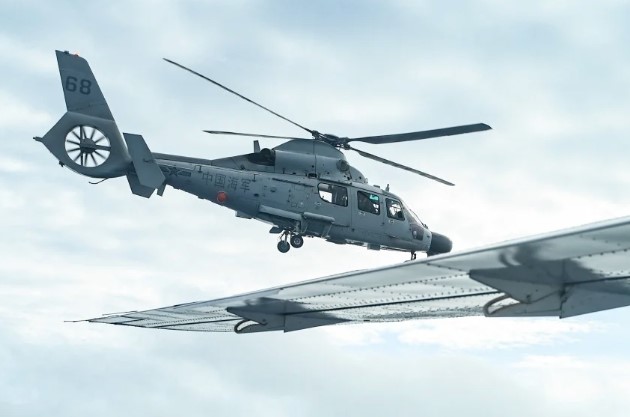A Risky Confrontation in the Sky
Tensions escalated once again over the contested Scarborough Shoal as the Chinese military expelled a Philippine aircraft from its airspace. The People’s Liberation Army (PLA) reported that a C-208 light utility aircraft, operated by the Philippines, had entered the airspace above the shoal without permission. The PLA’s Southern Theatre Command stated that naval and air forces monitored, tracked, and warned the aircraft to leave immediately. According to the Chinese military, this action was necessary to uphold the sovereignty of the region and was in accordance with Chinese regulations and international laws.
However, the Philippine coastguard described the Chinese response as reckless and dangerous. It reported that the Chinese navy conducted hazardous air maneuvers near the Philippine aircraft over Scarborough Shoal, flying in close proximity and creating a high-risk situation. A news agency journalist who was on board the Philippine plane described the tense exchange, including warnings issued by the Philippine pilot to the Chinese forces, urging them to keep a safe distance. This incident has further inflamed tensions between the two nations, adding to the long-standing disputes over control of the waters in the South China Sea, particularly in the Scarborough Shoal region.
Close Encounters and High-Stakes Risks Over Scarborough Shoal
The Philippine coastguard condemned the actions of the Chinese navy, emphasizing that such close-range encounters endanger the safety of both pilots and passengers. Reports indicated that a Chinese navy helicopter flew as close as 10 feet (3 meters) to the Philippine patrol aircraft over Scarborough Shoal. This resulted in a 30-minute standoff, where the Philippine pilot warned the Chinese helicopter that it was flying too close and creating a dangerous situation near the disputed reef.
Scarborough Shoal is a triangular reef formation controlled by China but also claimed by the Philippines. It is located more than 460 nautical miles from the southernmost Chinese province of Hainan but is only about 120 nautical miles from the Philippine island of Luzon. The region has been a flashpoint of territorial disputes, with both countries accusing each other of violating airspace and maritime boundaries. In December, China reported a similar case where it expelled another Philippine C-208 aircraft from Scarborough Shoal’s airspace.
The Chinese military asserts that Huangyan Island, the name it uses for the shoal, has always been part of its territory. It accused the Philippines of using military provocations to falsely assert its claims and create misleading narratives on the global stage. The PLA reiterated its commitment to defending national sovereignty and security in the South China Sea, emphasizing that it would continue to take necessary actions to prevent unauthorized incursions.
Ongoing Disputes in the South China Sea
The confrontation over Scarborough Shoal is part of a larger territorial dispute in the South China Sea. China claims extensive rights over the waters and islands in the region, bringing it into conflict with several neighboring countries, including the Philippines. The overlapping claims have led to multiple incidents, involving naval patrols, aircraft encounters, and diplomatic exchanges.
Earlier this month, tensions between the two countries escalated further when a Chinese destroyer fleet transited through the Basilan Strait, a key waterway that separates the Philippine islands of Mindanao and Basilan. The Philippines viewed this as another provocative move, adding to a series of events that have heightened concerns over security in the region, particularly in relation to the ongoing disputes over Scarborough Shoal. These tensions underscore the strategic importance of Scarborough Shoal in the broader South China Sea conflict.
China maintains that its military actions are defensive and necessary to protect its territorial rights, while the Philippines continues to assert its own sovereignty claims over the disputed regions. The South China Sea remains a heavily contested area, with various international laws and treaties struggling to resolve the ongoing disputes. The recent aerial encounter over Scarborough Shoal is yet another example of the fragile and unpredictable nature of the conflict. As tensions persist, Scarborough Shoal remains a focal point in the broader regional struggle for control and influence.
As the dispute continues, the risk of further confrontations remains high, with both sides standing firm on their territorial claims. The South China Sea remains a significant area of global interest, not just for the countries involved, but also for international maritime security and stability.

